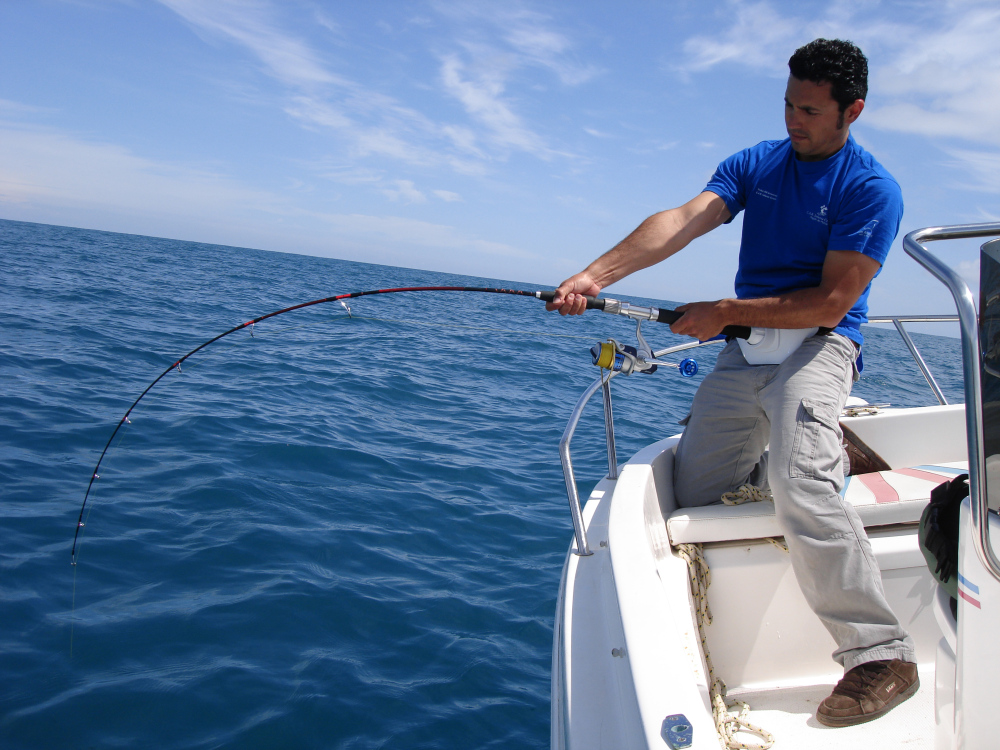|
Jiggerpole
A jiggerpole (or jigger pole) is a long fishing pole that is used with a short and heavy line, usually a foot (0.3 m) or less of 50 lbf (220 N) test or heavier. Then a large lure or bait is attached and manually worked around the shoreline and cover. In deep cover, the lure or bait can be presented by placing the tip of the fishing pole into the water. A jiggerpole may refer to a spar that extends a mast. History Fishing with a jiggerpole is perhaps the oldest known method of capturing bass Bass or Basses may refer to: Fish * Bass (fish), various saltwater and freshwater species Music * Bass (sound), describing low-frequency sound or one of several instruments in the bass range: ** Bass (instrument), including: ** Acoustic bass gui ... with an artificial lure. "Generations ago, savvy swamp fishermen used long cane poles rigged with short lengths of heavy line and large spinner/lures."Cornell University (1993Jiggerpoles''Field and stream'', Volume 98, Page 148. Notes Fis ... [...More Info...] [...Related Items...] OR: [Wikipedia] [Google] [Baidu] |
Jigging Off Queenscliff Pier, Vic, Jjron 5
Jigging is the practice of fishing with a jig, a type of weighted fishing lure. A jig consists of a heavy metal (typically lead) sinker with an attached fish hook that is usually obscured inside a soft lure or feather-like decorations. Jigs are intended to create a jerky, vertical "jumping" motion to attract fish, as opposed to other common lures like swimbaits, spoons and spinnerbaits, which move through the water more or less horizontally. The jig is very versatile and can be used in both salt and fresh water. Many deeper water fish species are attracted to the lure, which has made it popular among anglers for years. The jigging technique mainly involves rapid lifting motions of a fishing rod, which jerk the line exert a temporarily upward pull upon the sinking lure. When the target fish is enticed to swallow the lure, the angler then sets the hook to pierce and tether the fish in the mouth. Because the jigs are weighted, a harder-than-usual hookset is often needed to o ... [...More Info...] [...Related Items...] OR: [Wikipedia] [Google] [Baidu] |
Pound-force
The pound of force or pound-force (symbol: lbf, sometimes lbf,) is a unit of force used in some systems of measurement, including English Engineering units and the foot–pound–second system. Pound-force should not be confused with pound-mass (lb), often simply called ''pound'', which is a unit of mass, nor should these be confused with foot-pound (ft⋅lbf), a unit of energy, or pound-foot (lbf⋅ft), a unit of torque. Definitions The pound-force is equal to the gravitational force exerted on a mass of one avoirdupois pound on the surface of Earth. Since the 18th century, the unit has been used in low-precision measurements, for which small changes in Earth's gravity (which varies from equator to pole by up to half a percent) can safely be neglected. The 20th century, however, brought the need for a more precise definition, requiring a standardized value for acceleration due to gravity. Product of avoirdupois pound and standard gravity The pound-force is the product ... [...More Info...] [...Related Items...] OR: [Wikipedia] [Google] [Baidu] |
Newton (unit)
The newton (symbol: N) is the unit of force in the International System of Units (SI). It is defined as 1 kg⋅m/s, the force which gives a mass of 1 kilogram an acceleration of 1 metre per second per second. It is named after Isaac Newton in recognition of his work on classical mechanics, specifically Newton's second law of motion. Definition A newton is defined as 1 kg⋅m/s (it is a derived unit which is defined in terms of the SI base units). One newton is therefore the force needed to accelerate one kilogram of mass at the rate of one metre per second squared in the direction of the applied force. The units "metre per second squared" can be understood as measuring a rate of change in velocity per unit of time, i.e. an increase in velocity by 1 metre per second every second. In 1946, Conférence Générale des Poids et Mesures (CGPM) Resolution 2 standardized the unit of force in the MKS system of units to be the amount needed to accelerate 1 kilogram of mass at the rate ... [...More Info...] [...Related Items...] OR: [Wikipedia] [Google] [Baidu] |
Bass (fish)
Bass () is a name shared by many species of fish. The term encompasses both freshwater and marine species, all belonging to the large order Perciformes, or perch-like fishes. The word ''bass'' comes from Middle English , meaning 'perch'. Types * The black basses, such as the Choctaw bass (''Micropterus haiaka''), Guadalupe bass (''M. treculii''), largemouth bass (''M. salmoides''), smallmouth bass (''M. dolomieu''), and spotted bass (''M. punctulatus''), belong to the sunfish family Centrarchidae. * The temperate basses, such as the European seabass (''Dicentrarchus labrax''), striped bass (''Morone saxatilis'') and white bass (''M. chrysops''), belong to the family Moronidae. * The Asian seabasses, such as the Japanese seabass (''Lateolabrax japonicus'') and Blackfin seabass (''L. latus''), belong to the family Lateolabracidae. Other species known as bass Many species are also known as basses, including: * The Australian bass, ''Macquaria novemaculeata'', is a member of ... [...More Info...] [...Related Items...] OR: [Wikipedia] [Google] [Baidu] |


